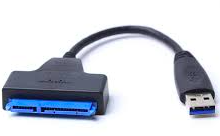Answer the question
In order to leave comments, you need to log in
Do additional drives need to be trimmed separately?
The operating system (windows) is on an SSD (120GB) and of course trim is enabled.
Additionally, it costs:
1. regular hdd (1TB) for files
2. second ssd (500GB). I plan to transfer everything to it
3. I connect an external SSD (500GB) via usb3 adapter. I connect the same disk to the Mac through the same adapter
USB-sata adapter

Questions:
1. Do you need trim only on the main disk or additional disks too?
2. the fact that trim is used by the main disk, does it affect the hdd, which is next to it?
3. Does the second ssd also use trim, or does it need to be configured separately somehow?
4. what about the SSD that is connected through an adapter?
3-4. The discs are new and I don't want to kill them out of stupidity.
Answer the question
In order to leave comments, you need to log in
Do additional drives need to be trimmed separately?No.
The discs are new and I don't want to kill them out of stupidity.TRIM has no effect on this.
1. TRIM is needed on any SSD.
2. No, HDD does not have TRIM.
3. Check.
4. As with others.
Didn't find what you were looking for?
Ask your questionAsk a Question
731 491 924 answers to any question